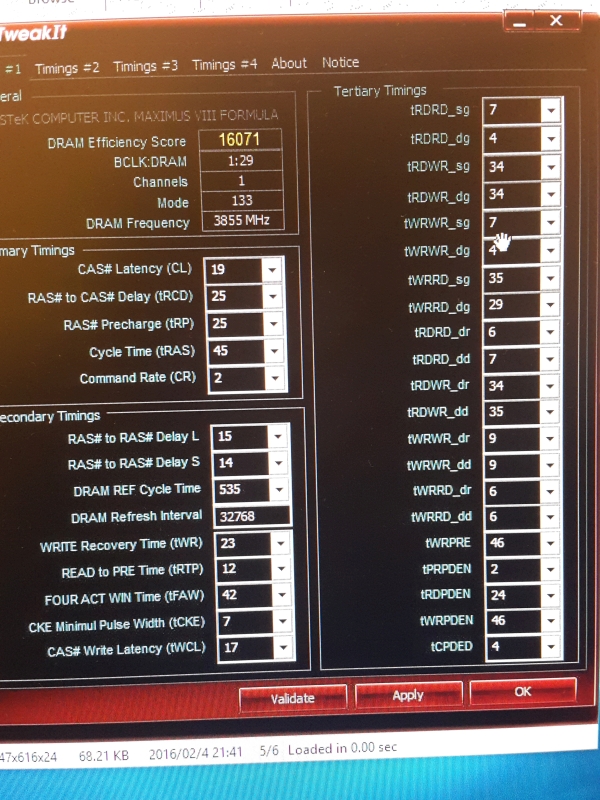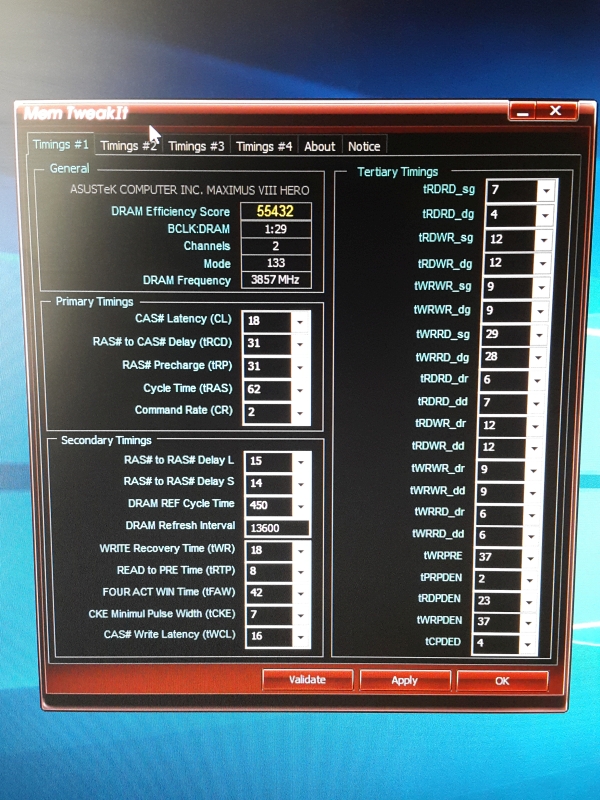- Joined
- Apr 22, 2010
- Messages
- 3,316
- Reaction score
- 989
- Points
- 5,365
It's not secret that modern hardware reviews tend to be rubbish.
Short of a handful of channels and sites, you're just being told what is on the box essentially - looking at unreliable benchmarks and fluff.
This applies almost exclusively to motherboards, dram and cpus but mostly the first two.
Memory
=======
While not a review as such, it is related and is important
Intel i7-8700K Coffee Lake Memory Benchmark Analysis
This Memory Performance Analysis at TPU took a lot of work of course and it's well put together for sure. This is not something against W1zzard or anyone, but pointing out an error that you see on YouTube Channels, written reviews etc.
The issue here is that the data is not reliable, in fact it doesn't tell you anything as measuring performance like that is unreliable and very much motherboard and firmware dependant.
- Merely adjusting primary timings, doesn't guarantee that you're testing solely those parameters. i.e going from 17-17-17-39 to 15-15-15-26 doesn't mean that this is all that changed in the memory configuration.
The CPU or specifically the IMC within the CPU, always goes through memory training and the primary settings are but only 4 of at least 30 other possible settings. These settings are configured uniquely or differently between motherboard brands and sometimes within the same brands depending on BIOS and SKU.
TRFC, TFAW, TRDP, TWCL etc. all of these are configured by the motherboard and THEY WILL CHANGE DEPENDING ON THE MOTHERBOARDS AUTO RULES!
So for the Techpowerup test to be truly representative, at the very least secondary and tertiary timings must be locked in and made static, with only the frequency and primary settings changing so one can see the actual effect of the primary timings or memory speed. When left to AUTO rules as they have been, the test becomes meaningless and while you have data, it's not information at all.


Here there are two things here being tested at the same time, which is not ideal.
Frequency must be isolated from the timings, primary or otherwise. You cannot test both at the same time, because those are co dependant (i.e you must de-couple these) and what is being represented here neither speaks for timings or frequency scaling, but specifically these settings at this particular frequency with unknown and sub-timings. (It is not a scientific way to test anything)
Excuse these, but they are older pics, one being single channel vs dual channel is of no consequence.


These are same chipset, both ROG but one Formula and one Hero and of course different BIOS versions. That is not the point however, the point here is that you can clearly see how different the sub timings are. These were set independently and automatically on each board based on the key'd in primary timings. The settings with the faster performance are not obvious but I will say that the difference is quite large.
So if these are not locked, the entire testing of memory scaling becomes effectively useless as it tells you nothing.
You have to have all the info before you can make a decision as to which is better or worse. On most motherboards and IMCs, the training of sub timings at 2,133MHz for instance cannot be maintained even at 2800MHz, despite the fact that you may have DDR4 3600 B-die memory. So if you compare, C15 2133 and keep scaling the frequency, and not locking in timings, even the results at 2,400 become unusable.
Short of a handful of channels and sites, you're just being told what is on the box essentially - looking at unreliable benchmarks and fluff.
This applies almost exclusively to motherboards, dram and cpus but mostly the first two.
Memory
=======
While not a review as such, it is related and is important
Intel i7-8700K Coffee Lake Memory Benchmark Analysis
This Memory Performance Analysis at TPU took a lot of work of course and it's well put together for sure. This is not something against W1zzard or anyone, but pointing out an error that you see on YouTube Channels, written reviews etc.
The issue here is that the data is not reliable, in fact it doesn't tell you anything as measuring performance like that is unreliable and very much motherboard and firmware dependant.
- Merely adjusting primary timings, doesn't guarantee that you're testing solely those parameters. i.e going from 17-17-17-39 to 15-15-15-26 doesn't mean that this is all that changed in the memory configuration.
The CPU or specifically the IMC within the CPU, always goes through memory training and the primary settings are but only 4 of at least 30 other possible settings. These settings are configured uniquely or differently between motherboard brands and sometimes within the same brands depending on BIOS and SKU.
TRFC, TFAW, TRDP, TWCL etc. all of these are configured by the motherboard and THEY WILL CHANGE DEPENDING ON THE MOTHERBOARDS AUTO RULES!
So for the Techpowerup test to be truly representative, at the very least secondary and tertiary timings must be locked in and made static, with only the frequency and primary settings changing so one can see the actual effect of the primary timings or memory speed. When left to AUTO rules as they have been, the test becomes meaningless and while you have data, it's not information at all.


Here there are two things here being tested at the same time, which is not ideal.
Frequency must be isolated from the timings, primary or otherwise. You cannot test both at the same time, because those are co dependant (i.e you must de-couple these) and what is being represented here neither speaks for timings or frequency scaling, but specifically these settings at this particular frequency with unknown and sub-timings. (It is not a scientific way to test anything)
Excuse these, but they are older pics, one being single channel vs dual channel is of no consequence.


These are same chipset, both ROG but one Formula and one Hero and of course different BIOS versions. That is not the point however, the point here is that you can clearly see how different the sub timings are. These were set independently and automatically on each board based on the key'd in primary timings. The settings with the faster performance are not obvious but I will say that the difference is quite large.
So if these are not locked, the entire testing of memory scaling becomes effectively useless as it tells you nothing.
You have to have all the info before you can make a decision as to which is better or worse. On most motherboards and IMCs, the training of sub timings at 2,133MHz for instance cannot be maintained even at 2800MHz, despite the fact that you may have DDR4 3600 B-die memory. So if you compare, C15 2133 and keep scaling the frequency, and not locking in timings, even the results at 2,400 become unusable.
Last edited:






